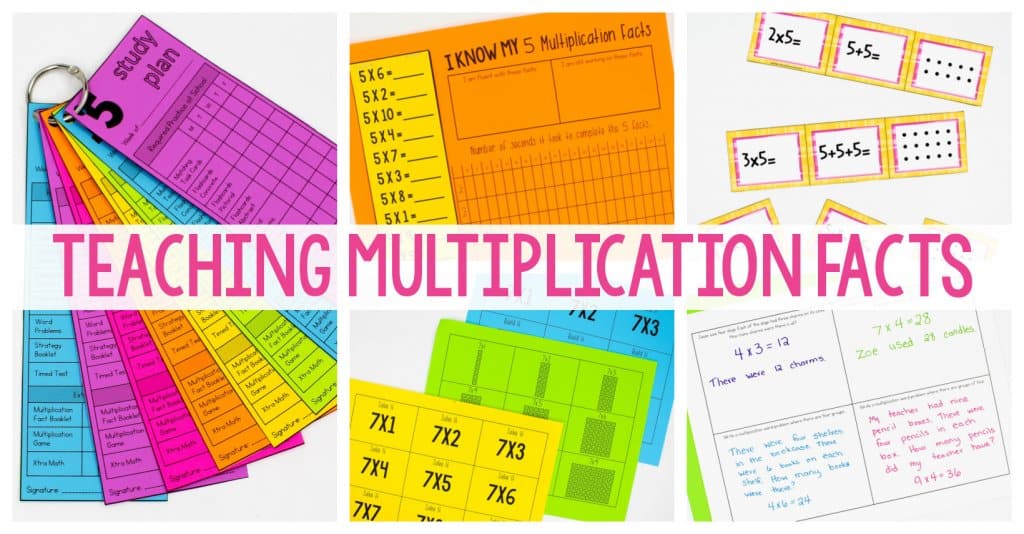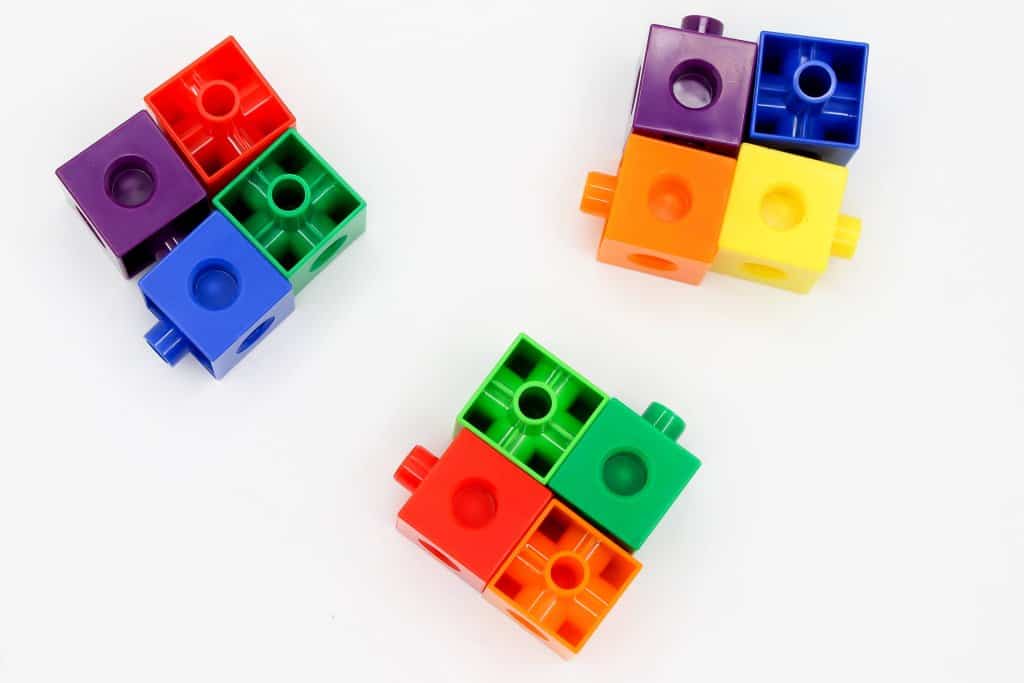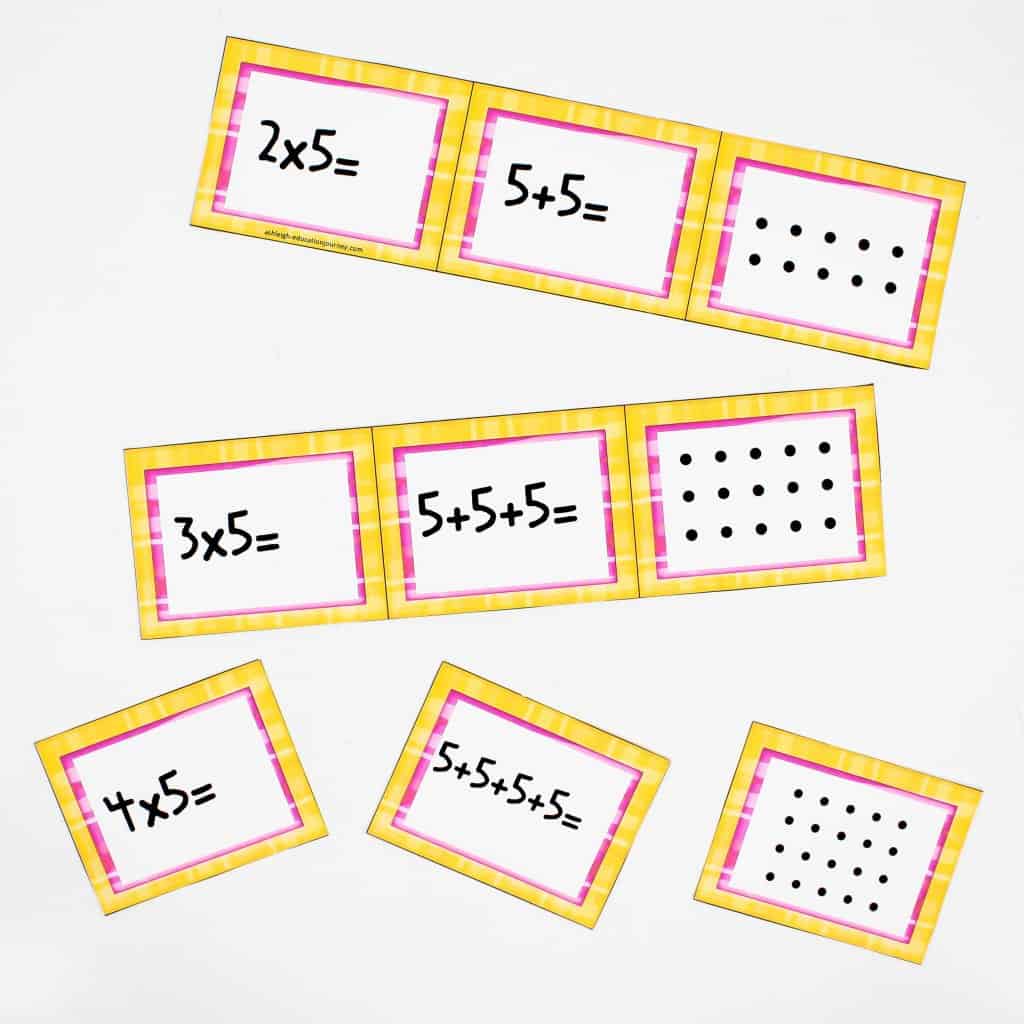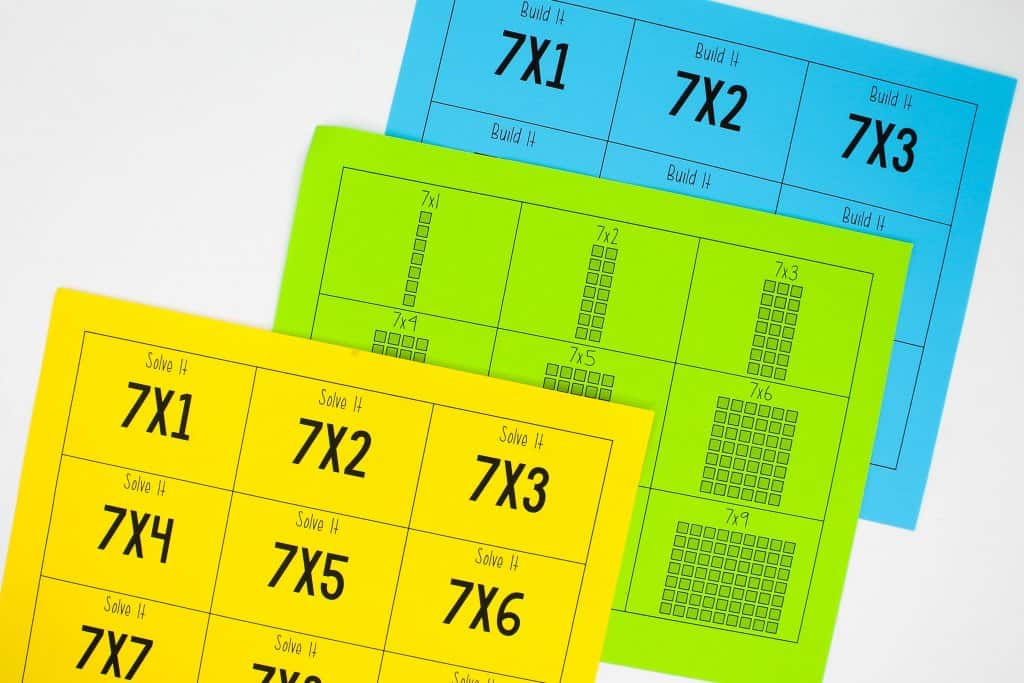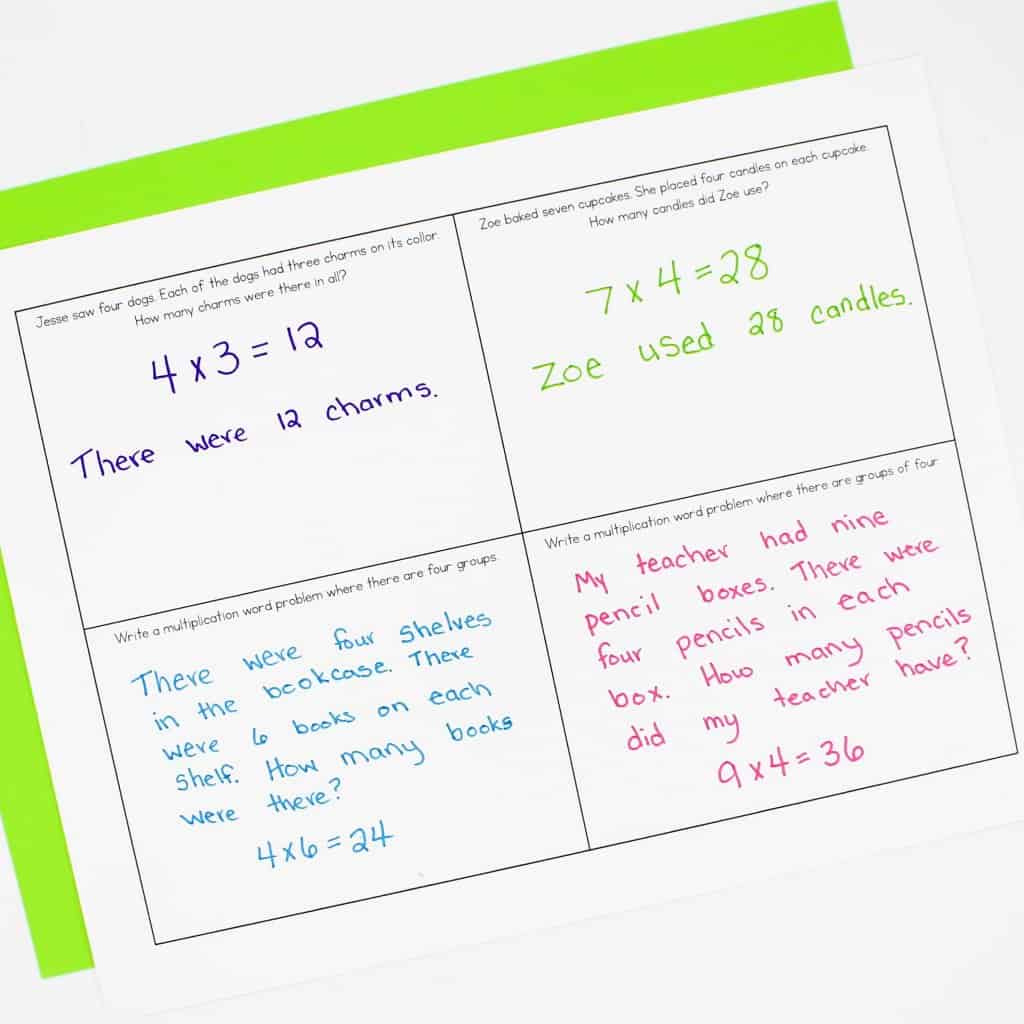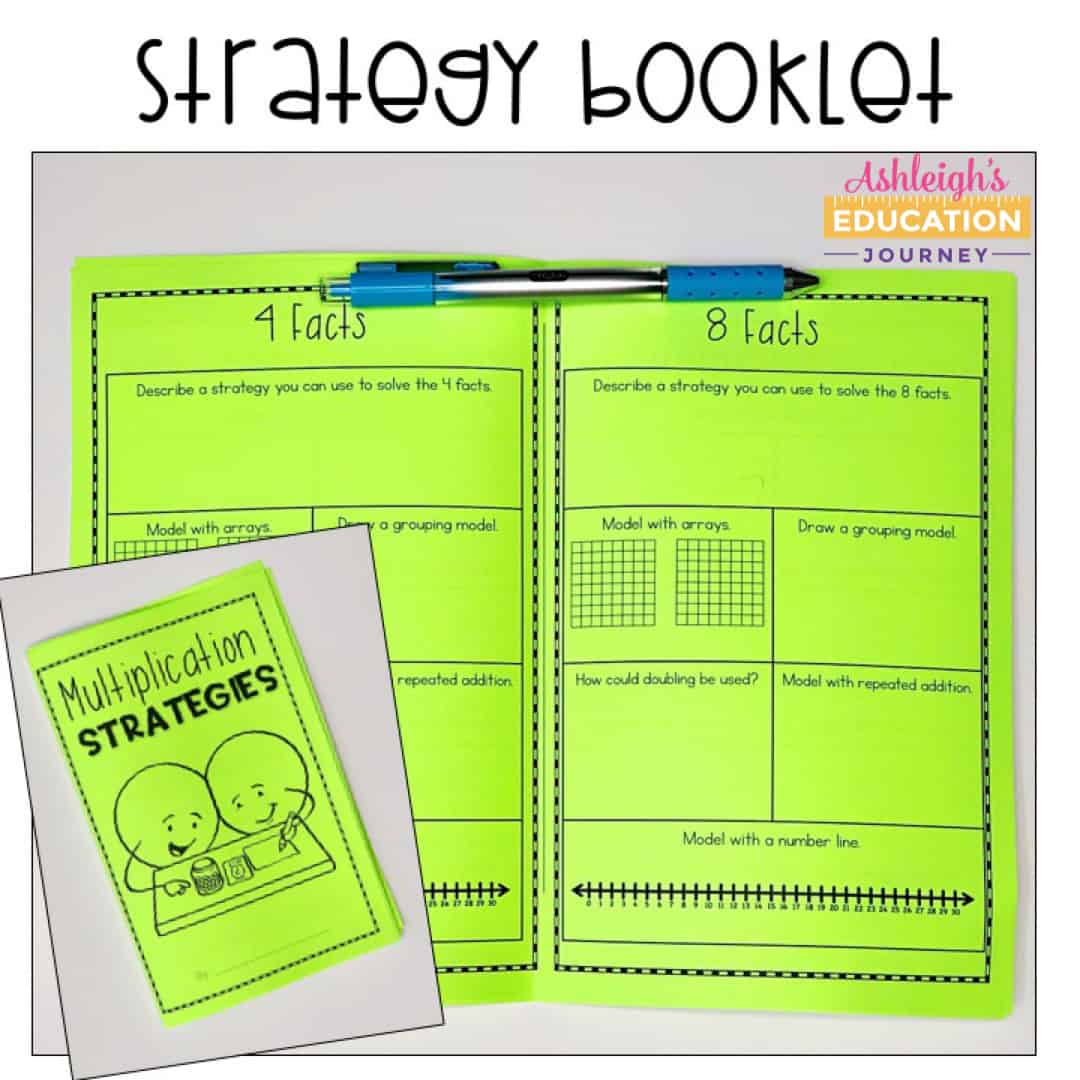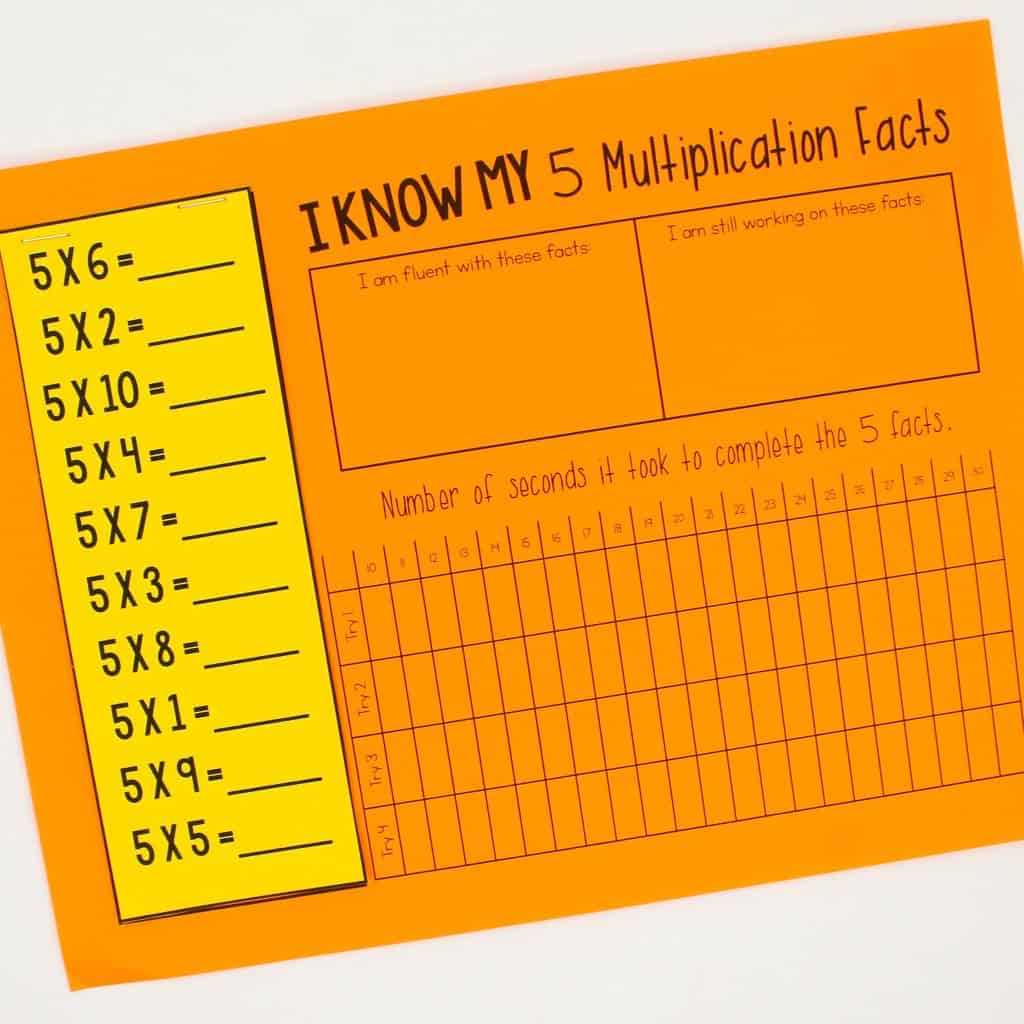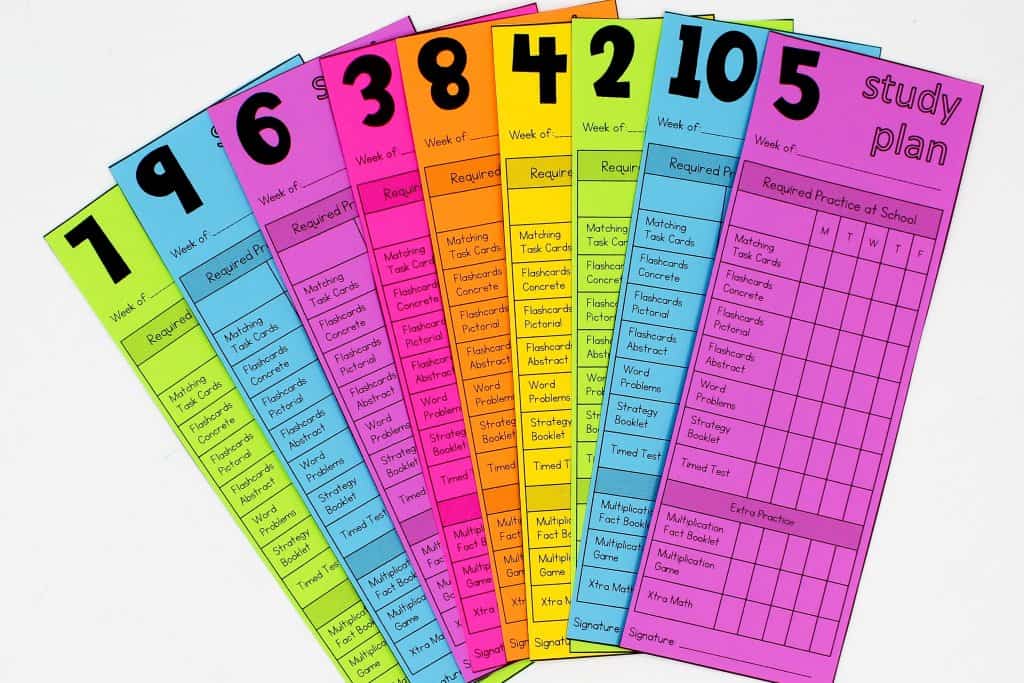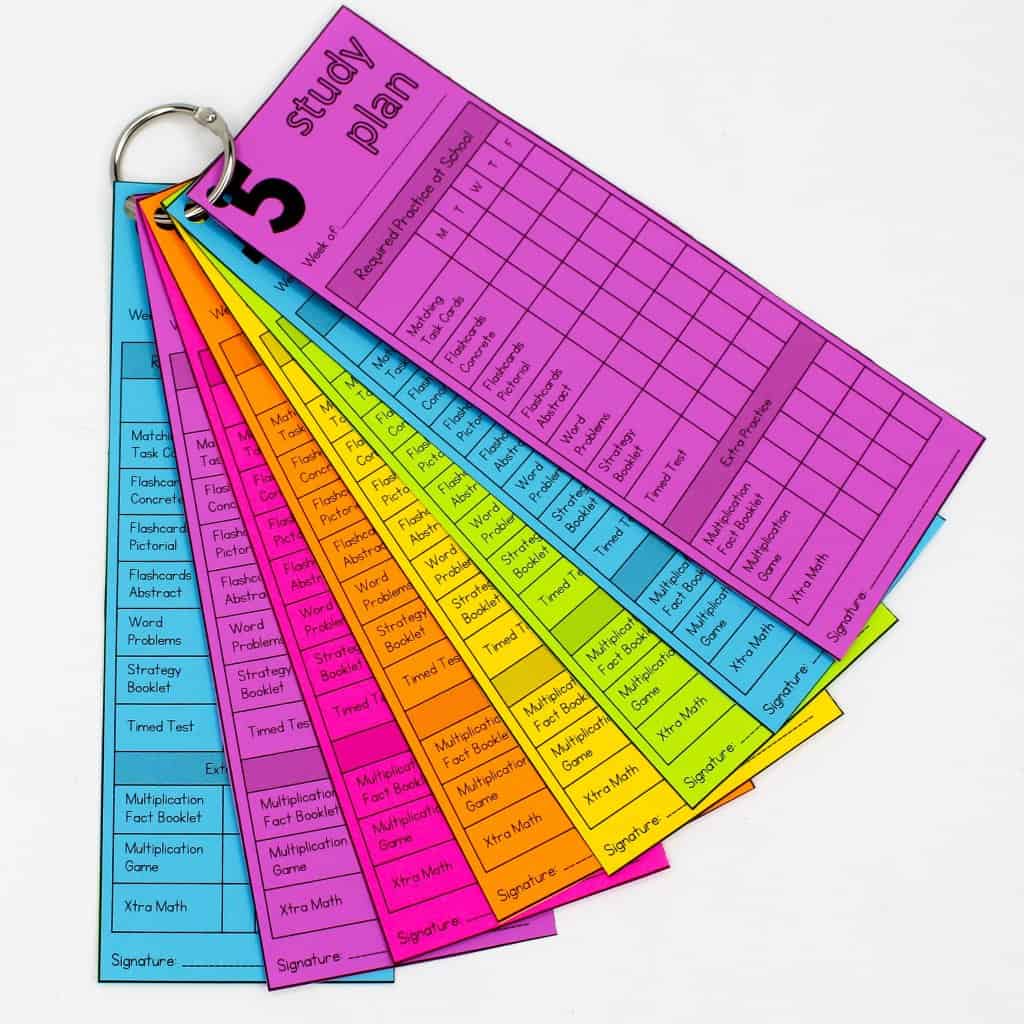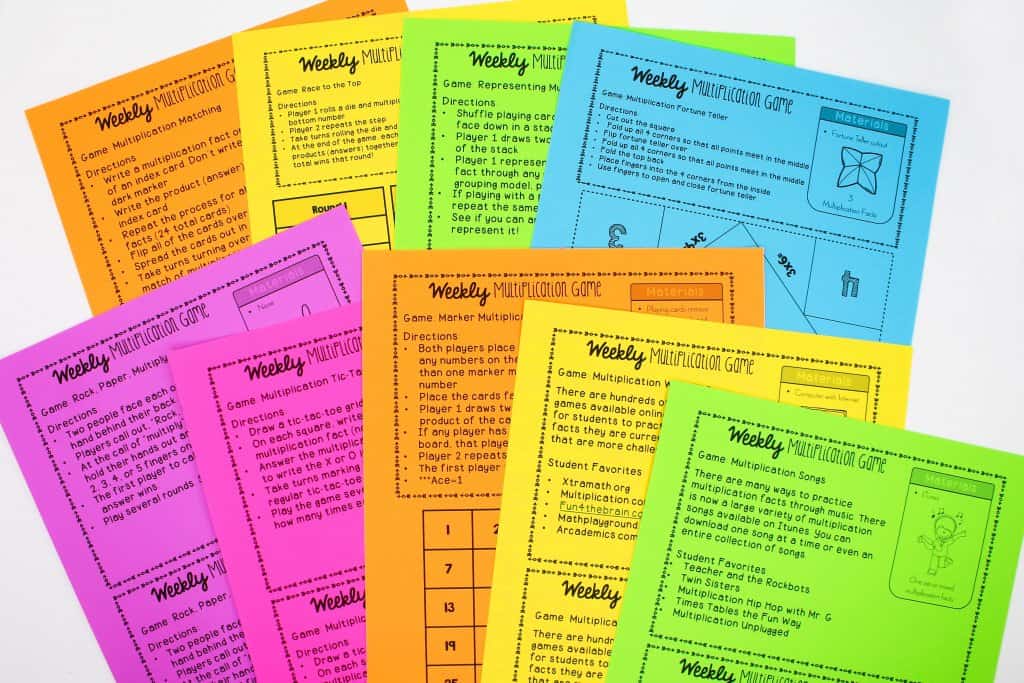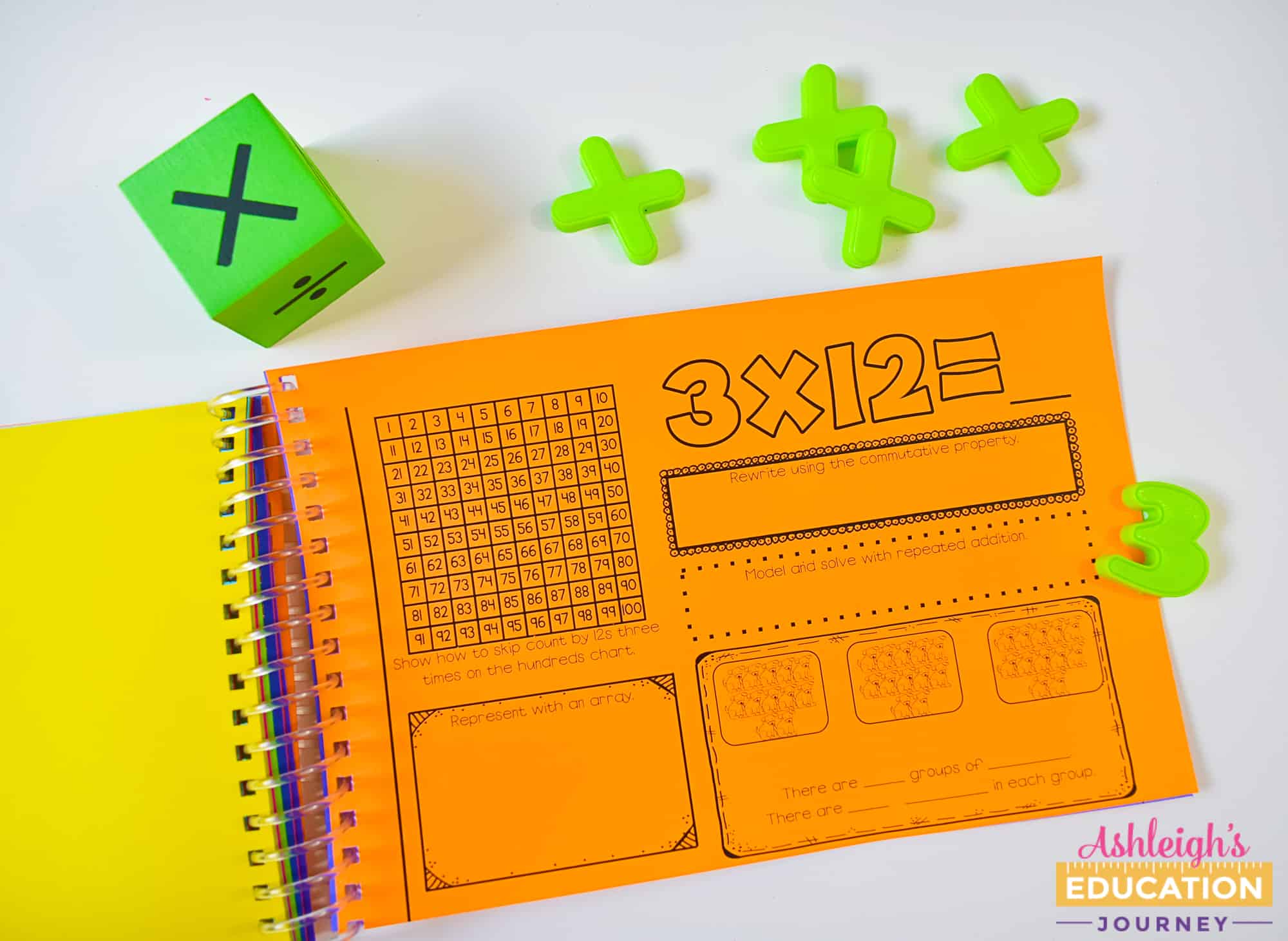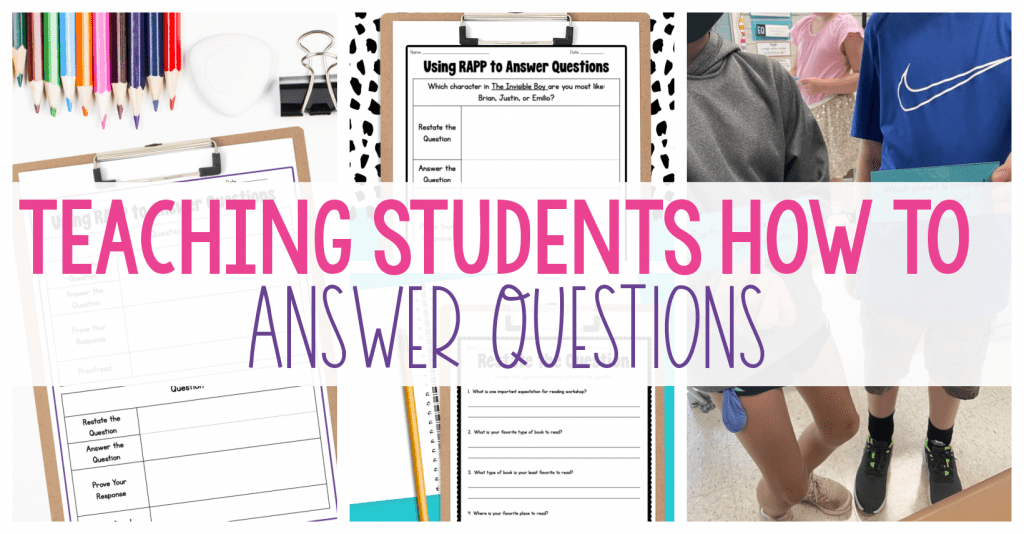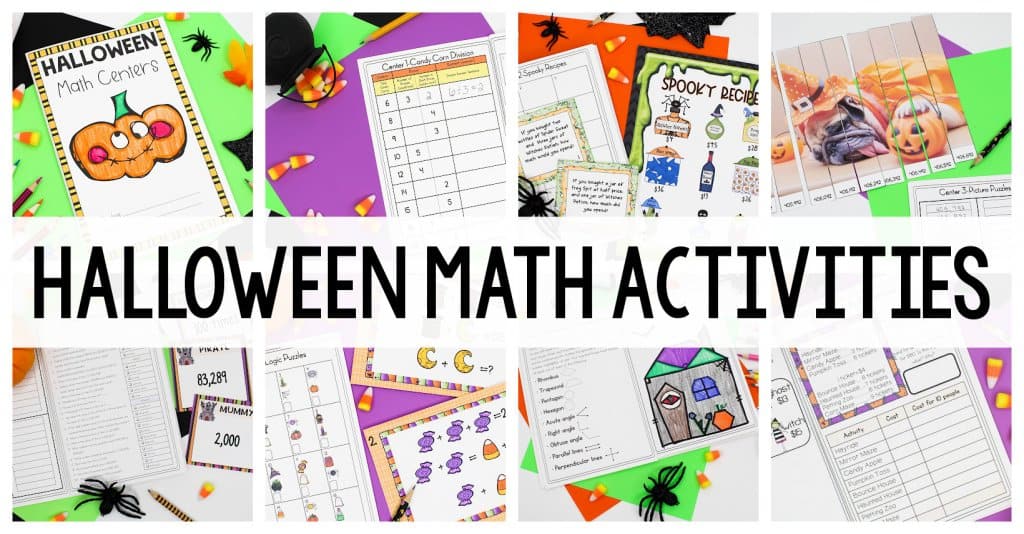Teaching multiplication facts is certainly a challenge. I surveyed more than 20,000 teachers about their biggest challenge teaching math, and the overwhelming response was that students don’t know their multiplication facts.
We’ve all experienced it. Some students easily memorize their multiplication facts, and other students memorize most of their multiplication facts but struggle with the more difficult ones. Then you have students who never manage to move beyond their 2s or 5s facts, which can create tremendous challenges.
While memorization is ideal, some students need to first become fluent before they can fully memorize their facts. Fact fluency means students can flexibly apply what they already know to efficiently solve multiplication problems. When I first started teaching, I wanted to skip straight to memorization, but I now realize that not all students can make that leap.
After many years of research and experience, I finally found a balanced system that works. Not only is it effective, it’s doesn’t create tons of extra work and stress for my students or the teacher! This system follows an intentional and systematic approach that provides consistency, engagement, and understanding.
In this post, I’ll first explain the parts of the program and then share ways you can utilize it in your classroom. I originally labeled the lessons with Monday, Tuesday, etc. because that’s the way my brain likes to organize. However, due to two years of virtual instruction, hybrid instruction, varied schedules, and so on, I’ve had to let that go. For the sake of flexibility I’ve gone with Day 1, Day 2, etc.
Teaching Multiplication Facts – Day 1-Build It
The first step for students is to SEE multiplication. On the first day of studying a set of multiplication facts, students create a grouping model for each set of facts (2×2, 2×3, 2×4, etc.). They can use any item as a manipulative. It certainly doesn’t have to be anything special.
If students complete this digitally, students drag the larger circle to indicate the number of groups. Then, students drag the squares to show the quantity in each group. It’s interesting to see who realizes they can simply add three more counters (or circles) for each fact. Students love thinking that they found a way to beat the system and don’t realize that they’ve found the relationship between repeated addition and multiplication, which is helpful for teaching multiplication facts.
Day 2-Multiple Representations
The next step teaching multiplication facts for students is to SEE the different representations of the math facts. In this activity, students sort representations of multiplication equations. There are arrays, repeated addition, and number sentences. This allows students to begin understanding what multiplication means.
In the digital version students drag a written description, array, repeated addition problem, and a multiplication equation to a single row. Each page has three rows and all the needed cards are included on that page, so students will not have to copy and paste any cards.
Teaching Multiplication Facts – Day 3-Visual Flashcards
At this point teaching multiplication facts, many students aren’t ready for traditional abstract flashcard practice. Instead, they can then use pictorial models of each multiplication problem as a flashcard. This pictorial model helps bridge concrete and abstract. I did include another set of flashcards where students can try to answer the multiplication problem using an abstract strategy.
If students are using the digital version, they create multiple representations of each set of facts. (Of course, you could have students complete both!) Students drag a square to a hundreds grid to show how to skip count. Then, they type a repeated addition representation. Students then drag blue squares to build an array of the fact. The last step is to drag an arrow to show multiplication on a number line.
Teaching Multiplication Facts Day 4-Word Problems
It’s important to teach math concepts in context. This means we shouldn’t save word problems for the end of our multiplication units. For each set of facts students should solve AND write multiplication word problems. For example, if students are working on their four facts they will solve two problems where four is a factor and write two problems where four is a factor.
The digital version looks almost identical to the paper version.
Day 5-Multiplication Strategies Booklet
When teaching multiplication facts, students should have the opportunity to WRITE about the strategies they use to solve multiplication problems. This allows students to internalize their learning. For each set of facts, students describe a strategy they could use to solve a multiplication problem. Students also represent problems using arrays, repeated addition, grouping models, and a number line.
Since the digital version Day 3 also includes quite a few of these tasks, I included a multiplication game. If students don’t have a partner, they can play color vs. color.
The Great Debate-Timed Test
We all want to encourage efficient strategies and automaticity, but timed tests aren’t as effective as instruction in developing these skills. Timed tests offer a good snapshot of how well students have memorized their facts, but are not a powerful teaching tool.
Rather than giving students a certain amount of problems to solve in a set amount of time, I have students time how long it took to complete all of the problems correctly. This alleviates most the stress that comes with a timed test. I also have students graph how long it took to complete the test to encourage students to look at their growth.
In the digital version, students click on a link to go to a Google Form where there is a short quiz. They must get each question correct before moving to the next question. Before beginning the quiz, students are prompted to start the included timer. Students are prompted to stop the time when they finish the quiz. Students graph how long it took them to complete the quiz.
Keeping Students Organized
I give students color coded bookmarks to use as a checklist. The bookmarks show exactly what is expected from students each week. The activities are listed in the order in which they should be completed. As students complete an activity, they check it off on the day it was completed. You can see these activities here!
You can even group the bookmarks together on a ring to keep everything in one place. There’s nothing wrong with keeping things bright and colorful when teaching multiplication facts;)
I added a few extras at the bottom of each bookmark, because these are things we do weekly, if not daily. I send home a Weekly Multiplication Game with students every Monday. These games only require dice or a set of playing cards, which I provide if students don’t have at home. This is an opportunity for fun practice and can be completely optional.
I also give students who need additional support a Multiplication Fact Booklet that will take them through each multiplication problem for that set of multiplication facts. This gives students the extra support they may need and it solidifies understanding. It’s a huge help teaching multiplication facts.
Xtra Math is another great practice tool. However, it’s important to keep in mind that it is a tool. Nothing replaces the conceptual activities where students actually work with multiplication facts.
You can read additional posts on teaching multiplication facts here and here. I’d love to hear about what you’ve tried that has been successful!

